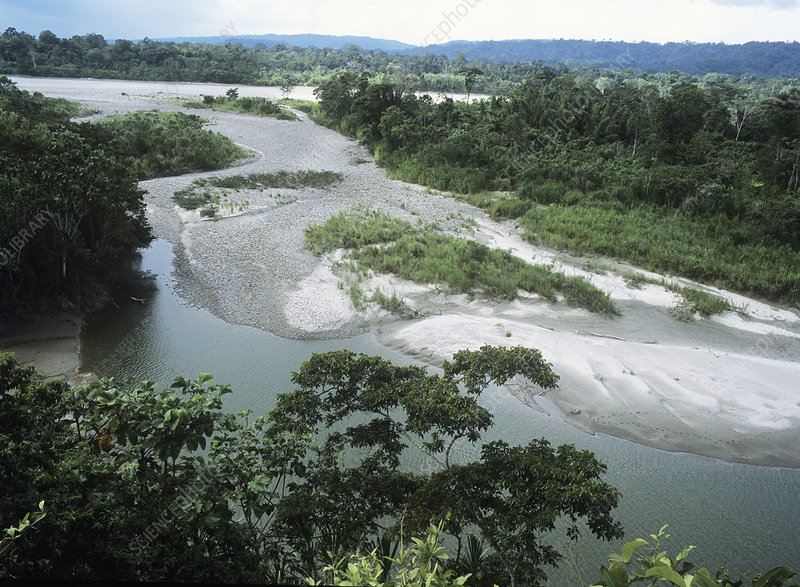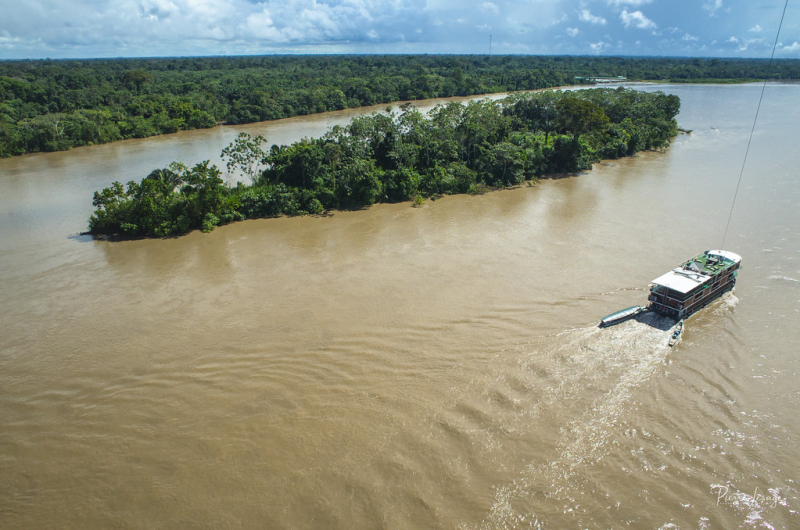Napo

The Napo River (Spanish: Río Napo) is an Amazon River tributary that originates in Ecuador on the sides of the east Andean mountains Antisana, Sincholagua, and Cotopaxi. This river is one of the longest rivers in Ecuador (702 miles).
Before reaching the plains, it gets a large number of tiny streams from impassable, saturated, and heavily fractured mountainous zones where thick and diverse flora appears to struggle for every piece of land. From the north, it is joined by the Coca River, which has its origins in the gorges of Cayambe volcano on the equator, and the Aguarico, a strong river with its headwaters between Cayambe and the Colombia border. It gets a minor tributary, the Curaray, from the Andean slopes between Cotopaxi and the Tungurahua volcano from the west. The Napo River is full of snags and shelving sandbanks from its Coca branch to the mouth of the Curaray, and it casts out innumerable canoes amid jungle-tangled islands that are inundated during the rainy season, giving the river a tremendous breadth. From the Coca to the Amazon, it flows across a wooded plain with no apparent hills, its consistently flat banks broken only by marshes and lagoons.
The Napo is navigable for river craft up to its Curaray branch, a distance of about 216 mi (348 km), and possibly a little further; from there, by painful canoe navigation, its upper waters can be ascended as far as Santa Rosa, the usual point of embarkation for any daring traveler who descends from the Quito tableland. The Coca river may be explored all the way up to its middle course, when it is trapped between two mountainsides in a deep canyon, rushing over tremendous falls and numerous reefs. This is the creek made famous by Gonzalo Pizarro's expedition.
Length: 702 miles










